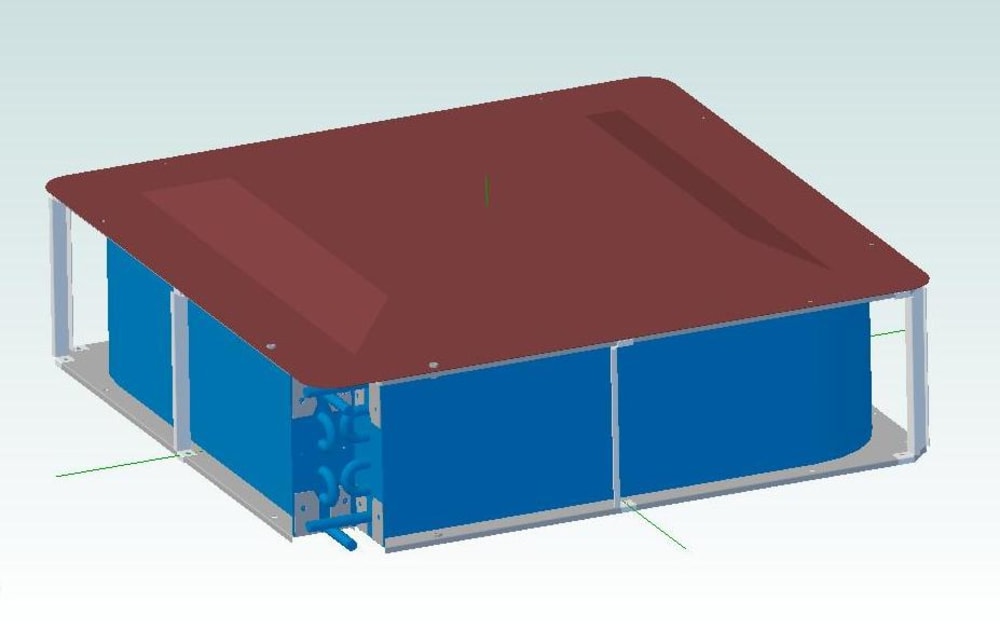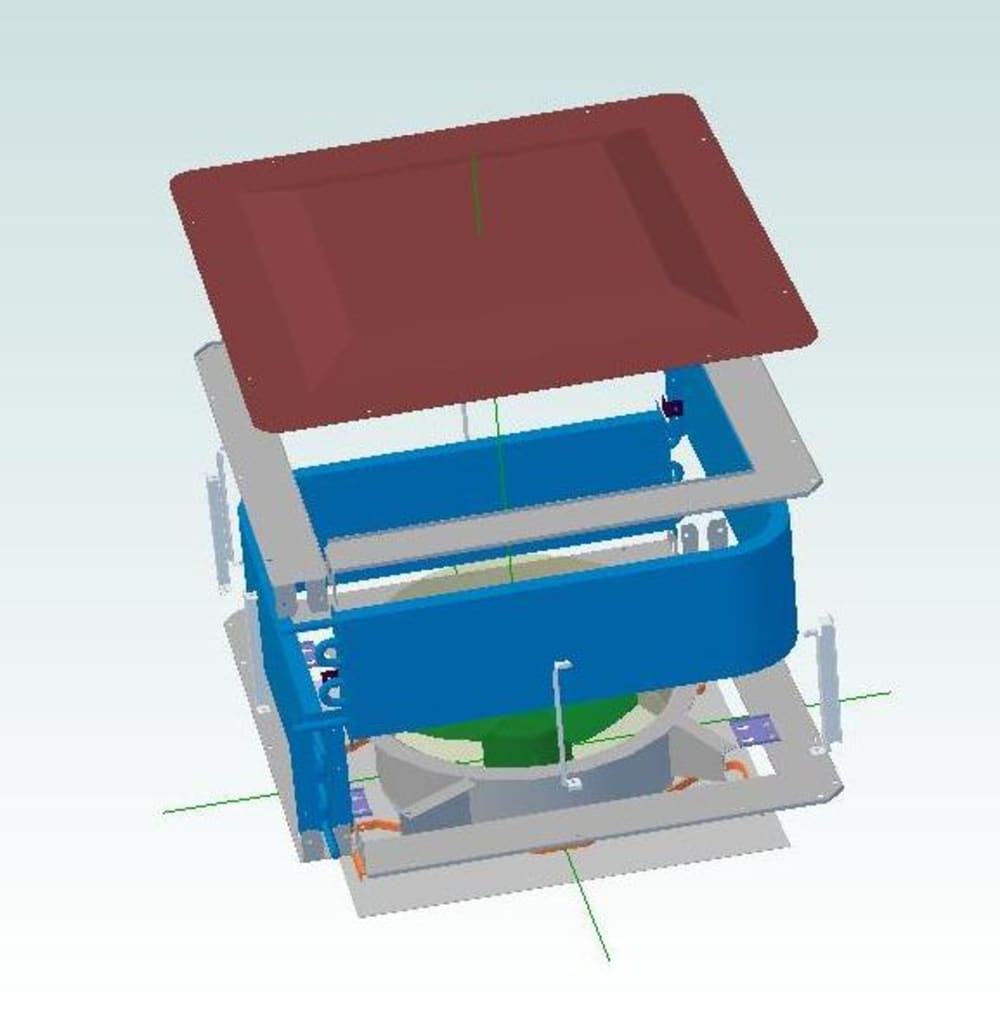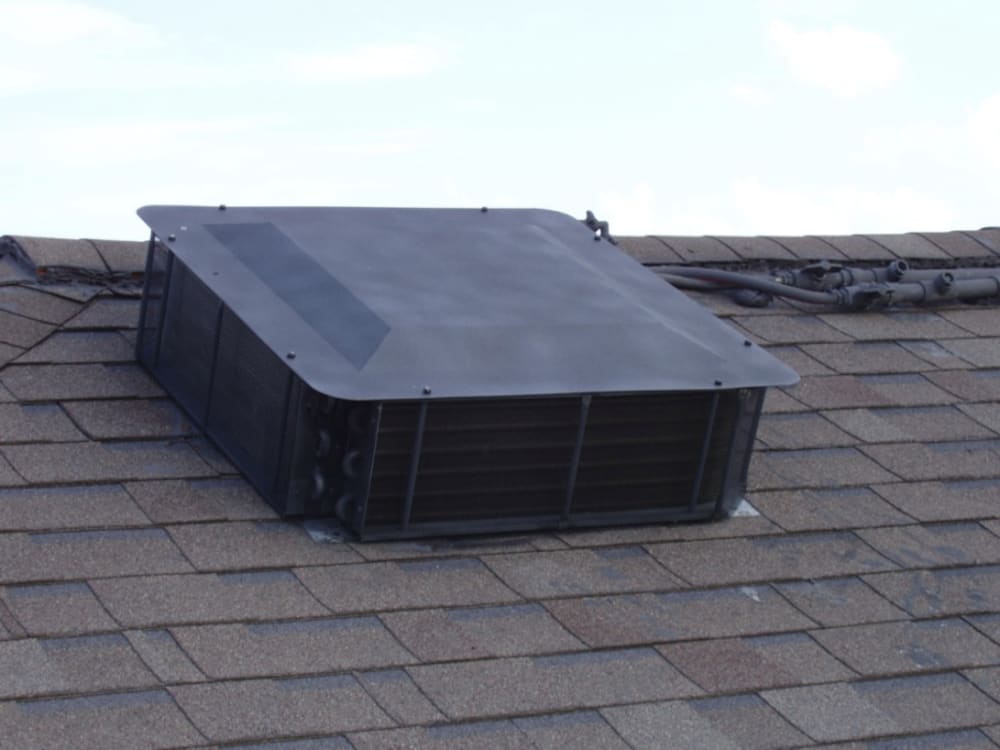WarmSpring improves access to a valuable source of heat. Since 1989, a product has been available which utilizes attic space heat for warming a swimming pool. During the warm seasons, this product allows the roof and attic portion of a house to function as an effective solar collector. For this application, a dark roof comprises the solar adsorption surface and the primary heat-collecting fluid is the air within the attic space. Although effective, this preceding product has practicality problems which have likely curtailed the degree to which consumers have adopted this otherwise promising technique. First of all, the installation involves placing a 140-lbs. fan-coil unit into an attic. Secondly, plumbing is routed through the attic to convey the entire water flow from the pool filter pump (typically 50 gpm) to and from the air-to-water heat exchanger. Accordingly, a flaw or failure in the plumbing would put much of the house in jeopardy. Furthermore, this earlier product can only reduce the attic temperature by raising the pool temperature. During the summer, particularly in the southern half of the US, there are times when the pool will become uncomfortable if it gets any warmer, but the heat in the attic will be at its peak severity unless some other means is used to moderate its temperature.
The patent pending WarmSpring attic heat recovery system takes a more practical approach to exploiting low-grade heat from a seasonally hot attic. In a nutshell, WarmSpring is basically the combination of an attic ventilation fan with a compact air-to-water heat exchanger. By simply turning off the water flow to the heat exchangers, a WarmSpring unit can provide just ventilation to moderate the attic temperature during the portion of summer when no pool heating is required. To prevent the possibility of water damage, the entire water circuit is external to the house. WarmSpring also departs from convention by not routing the entire filter pump flow to the heat exchangers. Instead 3 to 12 gpm flows through a heat exchanger loop that is in parallel with the primary pool pump flow. This small flow rate allows the use of very inexpensive ¾” PVC fittings and tubing for the heat exchanger loop. Moreover, a small 140 W pump is thermostatically engaged to drive the flow in the heat exchanger loop rather than a power-actuated valve which costs twice as much. The visual impact of WarmSpring is about the same as an ordinary attic fan. The small-diameter water lines attract little notice when painted to blend with the roof.
Being a low-tech product with a small number of parts, WarmSpring can be manufactured with long-established sheet metal and coil fabrication techniques. Several seasons of testing in Dallas have indicated that a single unit will routinely produce 250,000 BTU/day. Many of the owners of the eight million pools and four million hot tubs in the US will soon have a new lower-cost option for dramatically reducing their reliance on hydrocarbon-derived heating with its inherent cost and impact on the climate.
Like this entry?
-
About the Entrant
- Name:Christopher Roseberry
- Type of entry:individual
- Hardware used for this entry:varietySoftware used for this entry:Alibre Design
- Patent status:pending








